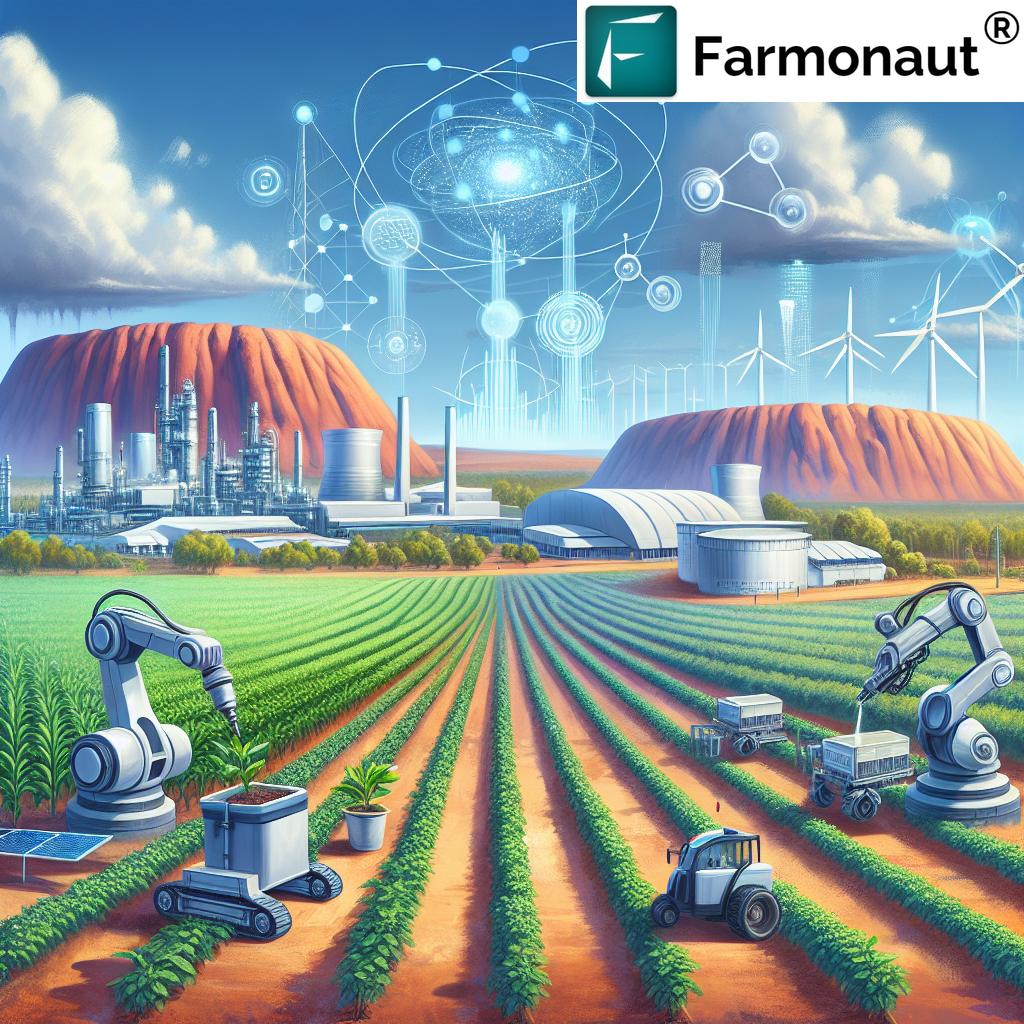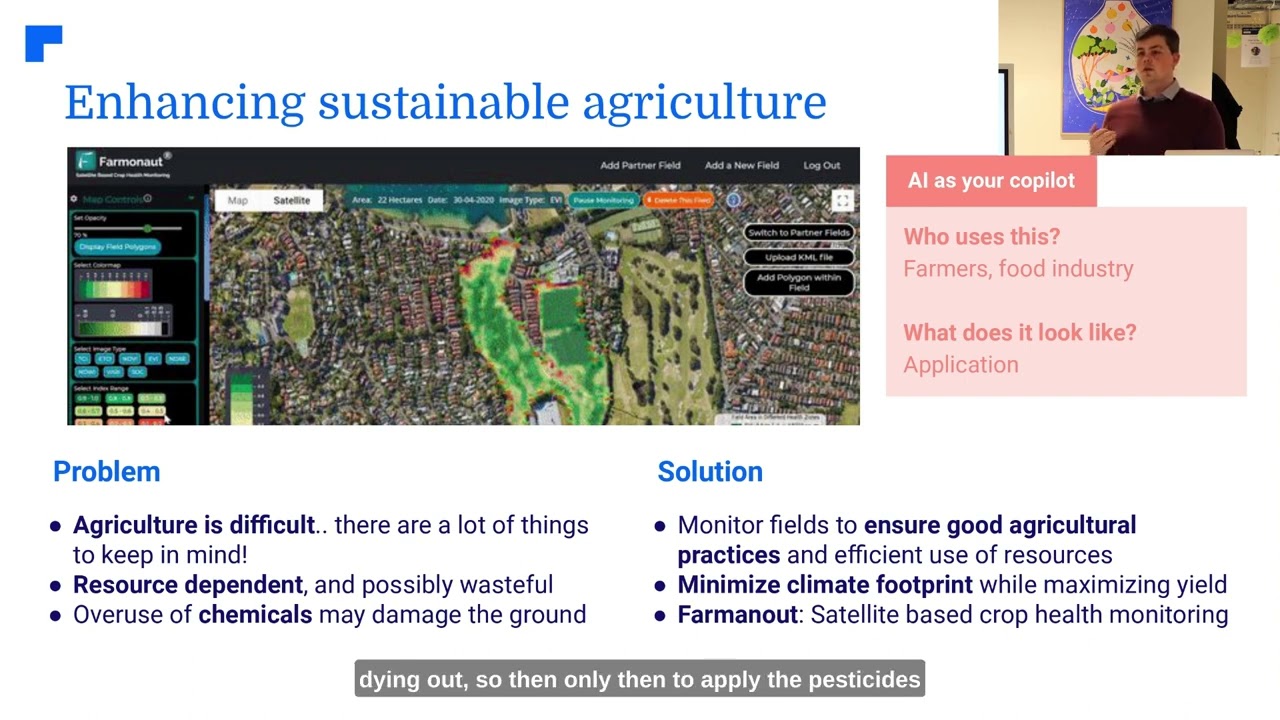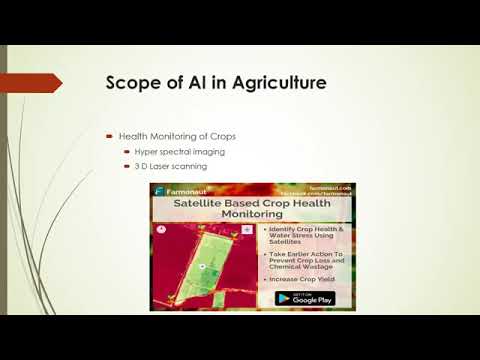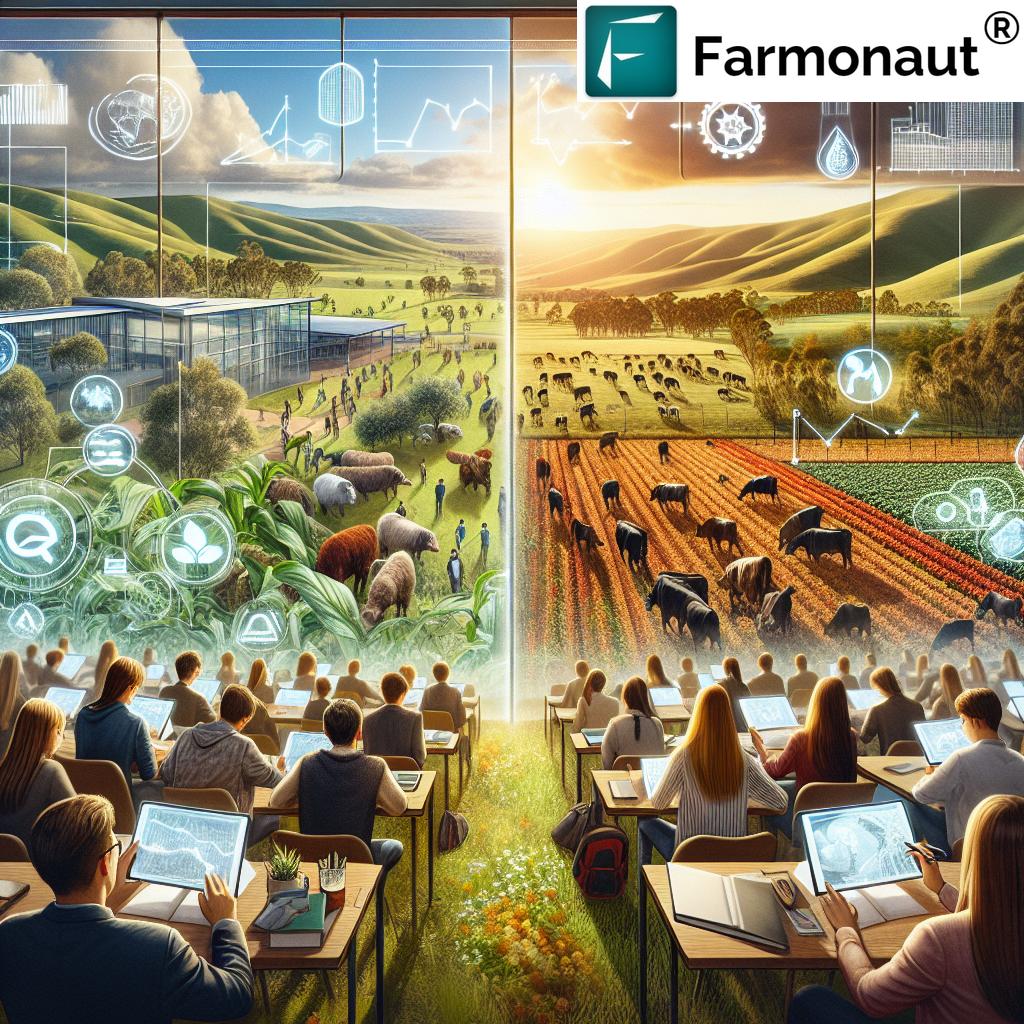Australia’s Economic Boom: Top 10 Growth Sectors Shaping the Nation’s Future by 2030

“Australia’s renewable energy exports are projected to contribute significantly to its GDP by 2030, potentially reaching billions in value.”
As we approach the year 2030, Australia’s economic landscape is poised for a remarkable transformation. The nation is embracing technological advancements, sustainable practices, and innovative solutions to address global challenges. In this comprehensive exploration, we’ll delve into the top 10 growth sectors that are set to shape Australia’s economic future. From renewable energy exports to advanced manufacturing, these industries are not just driving growth—they’re redefining Australia’s role in the global economy.
1. Clean Energy Revolution: Powering Australia’s Future
At the forefront of Australia’s economic boom is the clean energy sector. With abundant natural resources and a growing commitment to sustainability, Australia is positioned to become a global leader in renewable energy exports.
- Solar and Wind Energy Expansion: Australia’s vast landscapes offer immense potential for solar and wind farms. By 2030, we expect to see a significant increase in large-scale solar projects and offshore wind installations.
- Green Hydrogen Industry: The emerging green hydrogen industry is projected to become a $50+ billion sector by 2030. Australia’s natural advantages in renewable energy production make it an ideal location for green hydrogen manufacturing and export.
- Battery Storage and Grid Upgrades: To support the renewable energy transition, massive investments in battery storage technologies and smart grid infrastructure are underway.
The potential GDP impact of this sector is substantial. As global demand for clean energy solutions grows, Australia could establish itself as a powerhouse in renewable energy exports, creating thousands of jobs and driving economic growth.
2. AI and Cybersecurity: Safeguarding Australia’s Digital Future
The rapid advancement of artificial intelligence (AI) and the growing importance of cybersecurity are set to transform various industries across Australia.
- AI and Machine Learning Applications: From finance to healthcare and defense, AI is revolutionizing decision-making processes and operational efficiencies.
- Cybersecurity Services: With cyber threats on the rise, Australia’s cybersecurity industry is projected to reach $7 billion by 2030, creating numerous high-skilled job opportunities.
- Quantum Computing: Australia is investing heavily in quantum computing research, with projects backed by CSIRO and leading universities.
The economic impact of AI adoption alone could add a staggering $315 billion to Australia’s economy by 2030, according to Deloitte estimates.
3. Healthcare Innovation: Meeting the Needs of an Aging Population
Australia’s healthcare sector is undergoing a significant transformation to address the challenges of an aging population and the demand for advanced medical services.
- Aged Care Services: The expansion of retirement communities and specialized care facilities will create a booming industry.
- Digital Health and Telemedicine: Remote healthcare solutions are becoming increasingly sophisticated, improving access to medical services in rural areas.
- Biotech and Pharmaceutical R&D: Australia is positioning itself as a hub for cutting-edge medical research and drug development.
- NDIS Expansion: The National Disability Insurance Scheme is set to grow, providing more comprehensive support for Australians with disabilities.
Healthcare is expected to be one of the fastest-growing job markets in Australia, with a moderate to high GDP impact by 2030.
Explore Farmonaut’s API for innovative agricultural solutions
4. Advanced Manufacturing and Critical Minerals Processing
“By 2030, Australia’s critical minerals processing sector is expected to create thousands of new jobs, boosting the nation’s advanced manufacturing capabilities.”
Australia is leveraging its natural resources and technological expertise to become a key player in advanced manufacturing and critical minerals processing.
- Battery Manufacturing for EVs: Australia aims to become a global supplier of batteries for electric vehicles, capitalizing on its abundant mineral resources.
- Robotics and Smart Manufacturing: The Fourth Industrial Revolution is transforming Australian factories, increasing productivity and creating high-skilled jobs.
- Space Technology and Defense Innovation: Partnerships with NASA and the AUKUS alliance are driving advancements in space and defense technologies.
- Critical Minerals Processing: Australia is investing in refining and processing facilities to move up the value chain in mineral exports.
This sector has the potential to create tens of thousands of high-skilled jobs and reduce Australia’s reliance on raw commodity exports, significantly impacting GDP growth.
5. Sustainable Agriculture Technology: Feeding the Future
Australia’s agricultural sector is embracing innovation to increase productivity, sustainability, and global competitiveness.
- Precision Farming: The integration of AI, drones, and robotics in agriculture is revolutionizing farm management and crop yields.
- Alternative Proteins: Australia is investing in lab-grown meat and plant-based food technologies to meet changing consumer demands.
- Sustainable Water Management: Innovative irrigation systems and drought-resistant crop development are crucial for Australia’s water-scarce regions.
- Agtech Innovation: Climate-smart farming practices and digital agriculture platforms are enhancing efficiency and sustainability.
The potential GDP impact of this sector is moderate, with a focus on boosting efficiency in agriculture while expanding exports to Asian markets.
Access Farmonaut’s API Developer Docs for cutting-edge agtech solutions
6. Tourism and Hospitality: Reimagining the Visitor Experience
Australia’s tourism industry is adapting to new travel trends and leveraging its unique natural and cultural assets.
- Luxury and Adventure Tourism: High-end experiences and eco-adventures, including Great Barrier Reef conservation efforts, are attracting discerning travelers.
- Indigenous Tourism: There’s growing international interest in authentic Indigenous experiences and cultural exchanges.
- Events and Entertainment: The recovery and expansion of sports events, festivals, and concerts will boost tourism and local economies.
- Digital Nomad Hubs: Australia is developing remote work-friendly cities and co-working spaces to attract long-term international visitors.
While the tourism sector faces competition from Southeast Asia and Europe, its potential GDP impact remains moderate, with opportunities for innovation and niche market development.

7. Green Hydrogen: Australia’s Energy Export Revolution
The green hydrogen industry represents a significant opportunity for Australia to become a global energy powerhouse.
- Production Facilities: Large-scale green hydrogen production plants are being developed across the country.
- Export Infrastructure: Investments in port facilities and specialized shipping capabilities are underway to support hydrogen exports.
- Domestic Applications: Green hydrogen is being integrated into Australia’s energy mix, powering industries and transportation.
With projections suggesting the industry could be worth over $50 billion by 2030, the green hydrogen sector has the potential to significantly impact Australia’s GDP and position the country as a leader in clean energy exports.
8. Education and Skills Development: Preparing for the Future Workforce
As the economic landscape evolves, Australia is investing heavily in education and skills development to ensure its workforce remains competitive.
- EdTech Innovation: Australian companies are developing cutting-edge educational technologies, enhancing online and hybrid learning models.
- Vocational Training: There’s a renewed focus on vocational education to address skills gaps in emerging industries.
- International Education: Australia aims to strengthen its position as a global education destination, particularly for students from Asia and the Pacific.
- Lifelong Learning Programs: Initiatives to support continuous skill development and career transitions are being implemented nationwide.
The education sector’s contribution to GDP is expected to grow, driven by both domestic demand for upskilling and the return of international students.
9. Fintech and Blockchain: Revolutionizing Financial Services
Australia’s financial technology sector is experiencing rapid growth, driven by innovation and changing consumer preferences.
- Digital Banking: Neobanks and digital-first financial services are reshaping the banking landscape.
- Blockchain Applications: Beyond cryptocurrencies, blockchain is being applied to supply chain management, identity verification, and more.
- Regtech: Regulatory technology solutions are streamlining compliance processes for financial institutions.
- Open Banking: The implementation of open banking standards is fostering competition and innovation in financial services.
The fintech sector’s contribution to Australia’s GDP is expected to grow significantly, with potential for creating high-value jobs and attracting international investment.
10. Circular Economy and Waste Management
Australia is embracing the principles of a circular economy to address environmental challenges and create new economic opportunities.
- Recycling Technologies: Advanced recycling facilities are being developed to process various materials, including plastics and e-waste.
- Sustainable Packaging: Innovations in biodegradable and recyclable packaging are driving growth in this sector.
- Waste-to-Energy: Projects converting waste into energy are gaining traction, addressing both waste management and energy needs.
- Resource Recovery: New technologies are enabling the recovery of valuable materials from waste streams, creating additional revenue streams.
While the immediate GDP impact may be moderate, the long-term benefits of transitioning to a circular economy are substantial, including job creation and reduced environmental impact.
The Road Ahead: Challenges and Opportunities
As Australia navigates this economic transformation, several challenges and opportunities emerge:
- Skills Gap: Rapid technological advancements require continuous workforce upskilling and reskilling.
- Infrastructure Development: Significant investments in digital and physical infrastructure are needed to support these growing sectors.
- Regulatory Frameworks: Adapting regulations to keep pace with technological innovations while ensuring safety and fairness.
- Global Competition: Australia must maintain its competitive edge in an increasingly globalized economy.
- Climate Adaptation: Addressing the impacts of climate change on various industries, particularly agriculture and tourism.
Despite these challenges, the opportunities for growth and innovation are immense. By focusing on these key sectors, Australia is positioning itself for a prosperous and sustainable economic future.
Conclusion: A Resilient and Innovative Economy
As we look towards 2030, Australia’s economic landscape is set to be more diverse, resilient, and globally competitive than ever before. The top 10 growth sectors we’ve explored represent not just economic opportunities, but a vision for a sustainable and technologically advanced nation.
From the clean energy revolution to the expansion of advanced manufacturing, and from the innovations in healthcare to the burgeoning green hydrogen industry, Australia is laying the groundwork for a prosperous future. The integration of AI, cybersecurity, and sustainable practices across these sectors will be crucial in driving productivity and maintaining Australia’s competitive edge in the global market.
As we embrace these changes, it’s clear that education, skills development, and adaptability will be key to realizing the full potential of these growth sectors. By investing in these areas and fostering a culture of innovation, Australia is not just preparing for the future—it’s actively shaping it.
The journey to 2030 and beyond presents both challenges and unprecedented opportunities. With strategic investments, forward-thinking policies, and a commitment to sustainability, Australia is well-positioned to emerge as a global leader in many of these crucial sectors, ensuring a bright economic future for generations to come.
Earn With Farmonaut: Join our Affiliate Program
Earn 20% recurring commission with Farmonaut’s affiliate program by sharing your promo code and helping farmers save 10%. Onboard 10 Elite farmers monthly to earn a minimum of $148,000 annually—start now and grow your income!
Recommended Table: Top 10 Growth Sectors in Australia by 2030
| Rank | Sector | Estimated GDP Impact (%) |
|---|---|---|
| 1 | Renewable Energy Exports | 8.5% |
| 2 | AI and Cybersecurity | 7.2% |
| 3 | Healthcare Innovation | 6.8% |
| 4 | Advanced Manufacturing | 6.5% |
| 5 | Critical Minerals Processing | 5.9% |
| 6 | Sustainable Agriculture Technology | 5.3% |
| 7 | Green Hydrogen Industry | 4.8% |
| 8 | Education and Skills Development | 4.2% |
| 9 | Fintech and Blockchain | 3.7% |
| 10 | Circular Economy and Waste Management | 3.1% |
FAQ Section
Q1: What are the main drivers of Australia’s economic growth towards 2030?
A1: The main drivers include renewable energy exports, AI and cybersecurity advancements, healthcare innovation, advanced manufacturing, and sustainable agriculture technology. These sectors are expected to significantly contribute to Australia’s GDP and create numerous job opportunities.
Q2: How is Australia positioning itself in the global clean energy market?
A2: Australia is leveraging its natural resources to become a leader in renewable energy exports, particularly in solar, wind, and green hydrogen production. The country is also investing heavily in battery storage and grid upgrades to support this transition.
Q3: What role will AI and cybersecurity play in Australia’s economic future?
A3: AI and cybersecurity are set to transform various industries, from finance to healthcare and defense. The cybersecurity industry alone is projected to reach $7 billion by 2030, while AI adoption could add $315 billion to the economy.
Q4: How is Australia addressing the challenges of an aging population?
A4: Australia is focusing on expanding aged care services, digital health solutions, and telemedicine. The healthcare sector is expected to be one of the fastest-growing job markets, with significant investments in biotech and pharmaceutical R&D.
Q5: What opportunities does the green hydrogen industry present for Australia?
A5: The green hydrogen industry is projected to be worth over $50 billion by 2030. Australia is investing in production facilities, export infrastructure, and domestic applications, positioning itself as a global leader in clean energy exports.




















